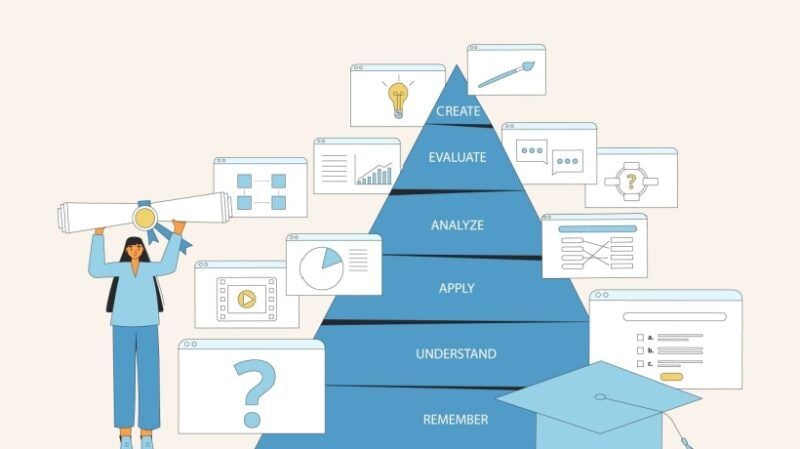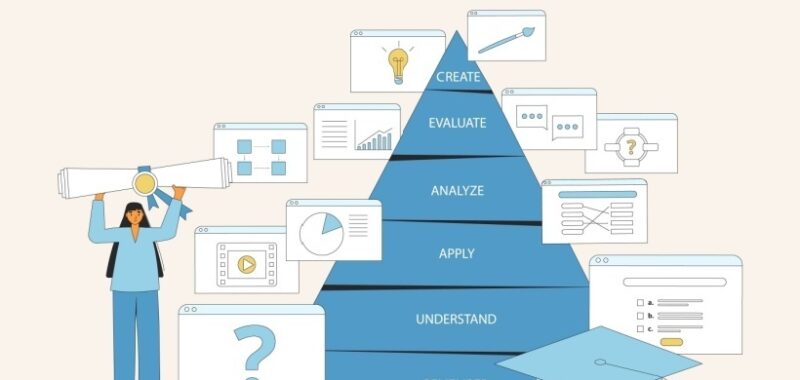
10 Myths You Need To Avoid As An Instructional Designer
Instructional Design is frequently misunderstood within Learning and Development (L&D) contexts, often leading to ineffective practices that can undermine the potential of educational and training programs. Here are some key myths about Instructional Design that contribute to this misunderstanding.
Myths About Instructional Design
1. Instructional Design Is Just About Content Delivery
Instructional Design is often misunderstood as being solely about delivering content in an effective manner. While content delivery is important, the scope of Instructional Design is much broader. It involves creating engaging and meaningful learning experiences that foster deeper understanding, long-term retention, and practical application of knowledge.
Instructional Design considers the entire learning journey, from identifying learners’ needs and objectives to designing assessments that measure progress and success. It emphasizes the importance of learner engagement, active participation, and interaction, ensuring that the content not only informs but also inspires and equips learners with the skills they need to succeed.
2. Learning Styles Must Be Matched
A common misconception is that instructional materials must be customized to fit individual learning styles, such as visual or auditory preferences. However, research shows that tailoring instruction to specific learning styles does not significantly improve learning outcomes.
Instead, effective Instructional Design should focus on the nature of the content being taught and the goals of the learning process. The emphasis should be on aligning learning experience design ((LXD) methods with the complexity of the material and the skills learners need to develop, rather than on catering to perceived learning style differences. By prioritizing well-structured content and clear learning objectives, Instructional Design can promote deeper understanding and better retention for all learners, regardless of their preferred style.
3. Anyone Can Be An Instructional Designer
A common misconception is that anyone can create effective learning experiences without the need for specialized training. However, designing high-quality educational experiences requires a deep understanding of several key areas, including pedagogy, cognitive science, and educational technology.
Effective Instructional Design is a professional skillset that combines knowledge of how people learn with the ability to apply appropriate teaching strategies, tools, and technologies. This ensures that learning experiences are engaging, accessible, and aligned with desired outcomes. Without expertise in these areas, Instructional Design may fail to meet the diverse needs of learners or support meaningful knowledge acquisition and retention.
4. More Content Equals Better Learning
A common belief is that more information leads to better learning, but it can have the opposite effect. When learners are bombarded with excessive content, cognitive overload can occur, making it difficult for them to process, understand, and retain the information. This overload overwhelms the brain’s ability to focus and absorb key concepts, leading to poor learning outcomes.
Instead of focusing on the quantity of information, Instructional Design should prioritize the quality and relevance of content. Streamlining the material to include only what is essential helps learners concentrate on the most important aspects, resulting in deeper understanding and better retention
5. Technology Equals Effective Learning
The assumption that merely incorporating technology into the learning process will automatically improve outcomes is misleading. While technology offers powerful tools and resources, its effectiveness depends on how it is used to support clear pedagogical goals. Technology should be used to enhance the learning experience, not as a standalone solution.
Successful Instructional Design integrates technology in a purposeful way, ensuring it complements the content and learning objectives. When used thoughtfully, technology can foster engagement, interactivity, and collaboration, but without a solid instructional foundation, it may fail to contribute meaningfully to the learning process.
6. Assessments Are Just For Grading
Assessments are frequently viewed as tools for assigning grades, but their role extends far beyond that. They are essential components of the learning process, serving to provide valuable feedback to both learners and instructors. Well-designed assessments help learners identify areas for improvement, reinforce their understanding, and guide them toward achieving their learning goals.
They also enable instructors to adjust their teaching strategies based on learners’ progress and needs. Rather than focusing solely on evaluation, assessments should be seen as opportunities for growth, reflection, and mastery of the material.
7. Self-Directed Learning Is Always Effective
The belief that learners can easily navigate their own learning paths simply because they are familiar with technology is flawed. While many learners are adept at using digital tools, research reveals that a significant number lack the strategies and skills required for effective self-directed learning.
Without proper guidance, learners may struggle with organizing their studies, staying motivated, or evaluating their progress. This underscores the importance of structured instructional support, which provides learners with clear objectives, resources, and scaffolding to help them develop the self-regulation and critical thinking skills necessary for independent learning success.
8. Instructional Design Is Linear
Some people assume that Instructional Design follows a strictly linear, step-by-step process. Effective Instructional Design is iterative, involving ongoing evaluation and refinement.
Learning experience designers must regularly gather feedback from learners and assess the effectiveness of instructional strategies. This allows for adjustments to be made throughout the learning experience, ensuring that the content remains relevant, engaging, and effective. Rather than being a one-time process, Instructional Design involves continuous cycles of improvement to adapt to learners’ needs, emerging challenges, and evolving educational goals.
9. Visual Design Is Not Important
Poor visual design can significantly hinder comprehension and learner engagement. Cluttered layouts, confusing graphics, or inappropriate use of color and fonts can make it difficult for learners to focus on key concepts and absorb information.
Effective Instructional Design, however, uses thoughtful visual strategies to enhance readability, comprehension, and overall learning experience. By incorporating clear layouts, intuitive navigation, and well-chosen visuals that support the content, Instructional Design can help learners grasp complex ideas more easily. Good visual design not only makes materials more engaging but also facilitates better understanding and retention.
10. All Learning Can Be Digital
While digital learning is becoming increasingly popular, it’s important to recognize that not all learners prefer or thrive in this mode of instruction. Some learners may find face-to-face interaction or a blend of traditional and digital methods more effective.
To create impactful learning experiences, Instructional Design should consider diverse learner preferences and offer flexible options that cater to different learning styles and environments. By incorporating various instructional methods—such as blended learning, asynchronous and synchronous sessions, or even hands-on components— learning experience designers can ensure that all learners have the opportunity to engage with the material in a way that maximizes their learning potential.
Conclusion
By addressing these myths and misconceptions surrounding Instructional Design, organizations can foster a deeper understanding of its critical role in creating effective learning experiences. Educating stakeholders—such as educators, administrators, and learners—about the true nature of Instructional Design can help dispel misunderstandings and promote best practices. This awareness not only enhances the quality of educational content but also leads to improved educational outcomes. When Instructional Design is recognized as a strategic process that prioritizes engagement, feedback, and flexibility, organizations can cultivate learning environments that truly meet the needs of all learners, ultimately contributing to their success and achievement.

